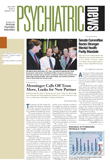Several experts speaking at the 10th annual Alzheimer’s Education Conference in Chicaco in July agree that an integral part of reforming systems of care for patients with the progressively debilitating disease must focus on direct caregivers. To be successful, systems of care must address retention of quality employees in long-term-care facilities as well as quickly growing home- and community-based programs (see
story on facing page).
With care for Alzheimer’s disease (AD) patients moving away from nursing homes, patients are increasingly being cared for not by paid, skilled workers, but by untrained, unpaid caregivers. It was estimated by the National Long Term Care Survey (NLTCS), reported last year by the Administration on Aging, that more than 7 million spouses, family members, friends, or neighbors are providing unpaid help to 4 million older people with functional limitations in a home setting.
According to the study, if these caregivers were replaced with paid home-care personnel, the cost of caring for these patients would increase between $45 billion and $94 billion annually.
The NLTCS data indicate that nearly 65 percent of noninstitutionalized patients who need health care assistance depend solely on family and friends, and 30 percent supplement that care with limited services from paid home care providers. Only about 5 percent rely solely on paid home care services.
Providing care in the home for a patient with AD is a huge responsibility, noted Rosemary Barrow, Ed.D., a sociologist and educational counselor at Stephens College in Columbia, Mo. She and Alice Anderson, a social worker with Educational and Human Services, also in Columbia, said that caregivers not only need to be educated on the disease but also on how to be a caregiver.
According to Alzheimer’s Association data, caregivers commonly experience depression, grief, and burnout, which hamper their efforts to take care of their loved ones. Emphasizing the use of community resources, Barrow said, helps to reduce caregiver stress. The biggest barrier to accessing resources, however, is caregivers not knowing what community-based support is available. It is essential, she said, that support programs have strong outreach efforts to make sure that their services are well known in the communities they serve.
Delores Moyer, a nurse practitioner who manages the direct caregiver staff at Harbor Senior Concepts in Middleton, Wis., said that providing support services to paid caregivers is just as crucial. Moyer and her colleagues surveyed nearly 500 employees at long-term-care facilities in nine states over 12 years. The results showed that retention of quality staff lies first in improved recruiting techniques, followed by giving rewards for excellent work, and support- and education-oriented activities focused on staff self-improvement and professional growth.
Mark Sager, M.D., director of the Wisconsin Alzheimer’s Institute (WAI) at the University of Wisconsin, agrees. WAI has developed a worker education, training, and assistance (WETA) model for the long-term-care industry, aimed at improving the quality of care by improving the quality of the staff.
In developing the WETA, WAI surveyed more than 700 long-term-care workers and found that low pay and benefits were not the only factors influencing the quality of care. Inadequate training, unreasonable work loads, lack of opportunity for advancement, little respect from supervisors, and lack of organizational recognition also contribute to workers’ high stress and translate into high turnover rates, which in turn reduce the quality of care.
The Administration on Aging report, “Implementing the National Family Caregiver Support Program,” including data from the National Long Term Care Survey, is available on the Web at www.aoa.gov.carenetwork/report.html; more information on WETA is available at www.medsch.wisc.edu/wai/education.html.
